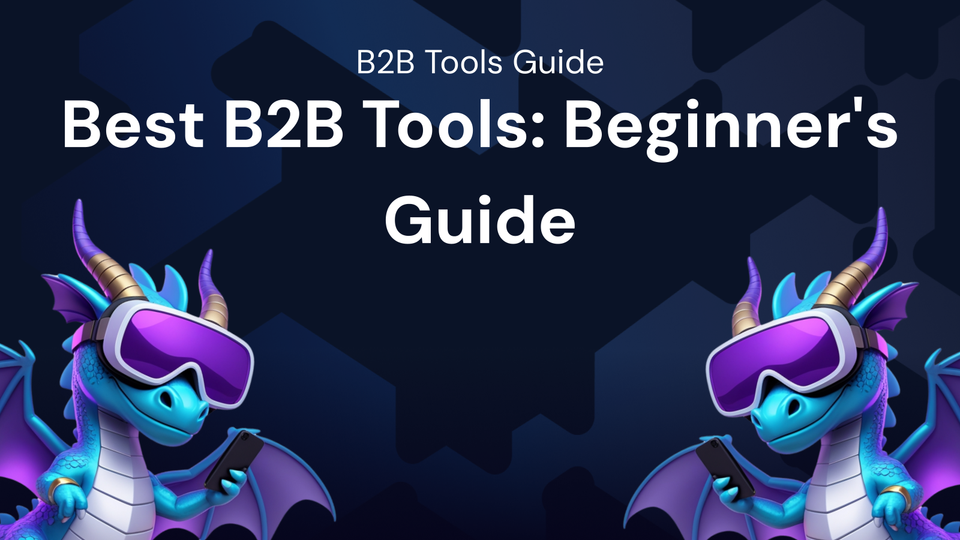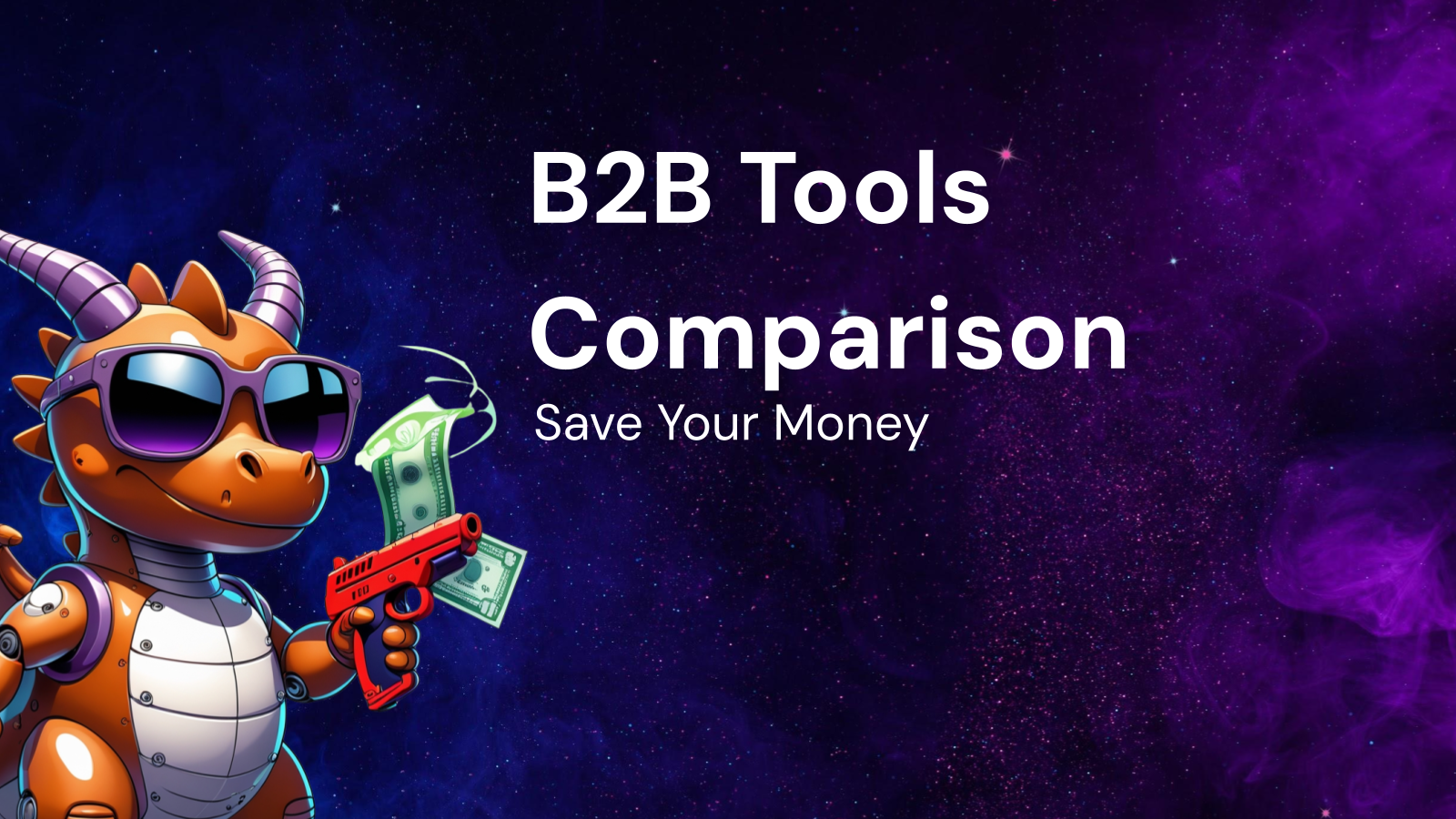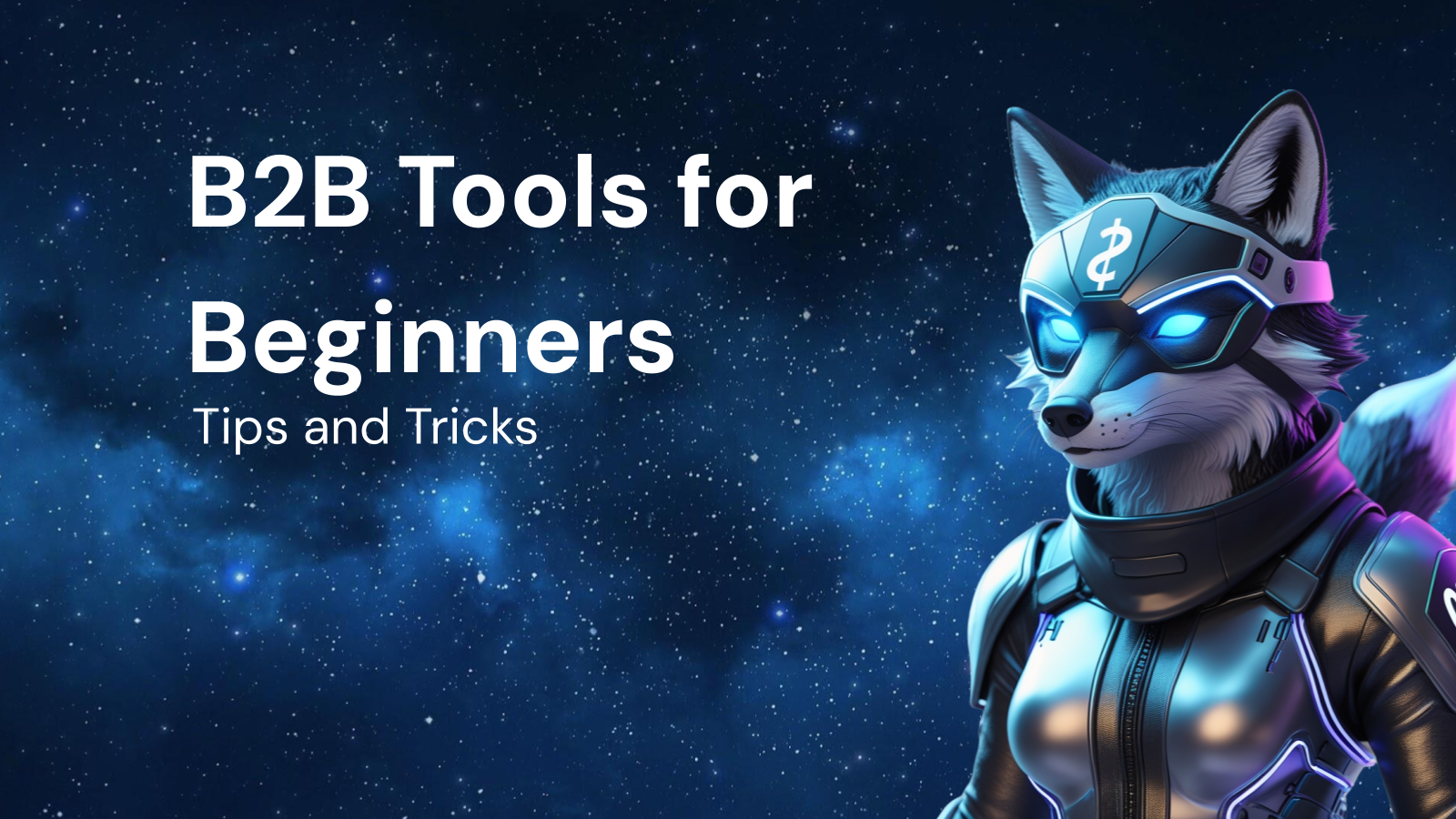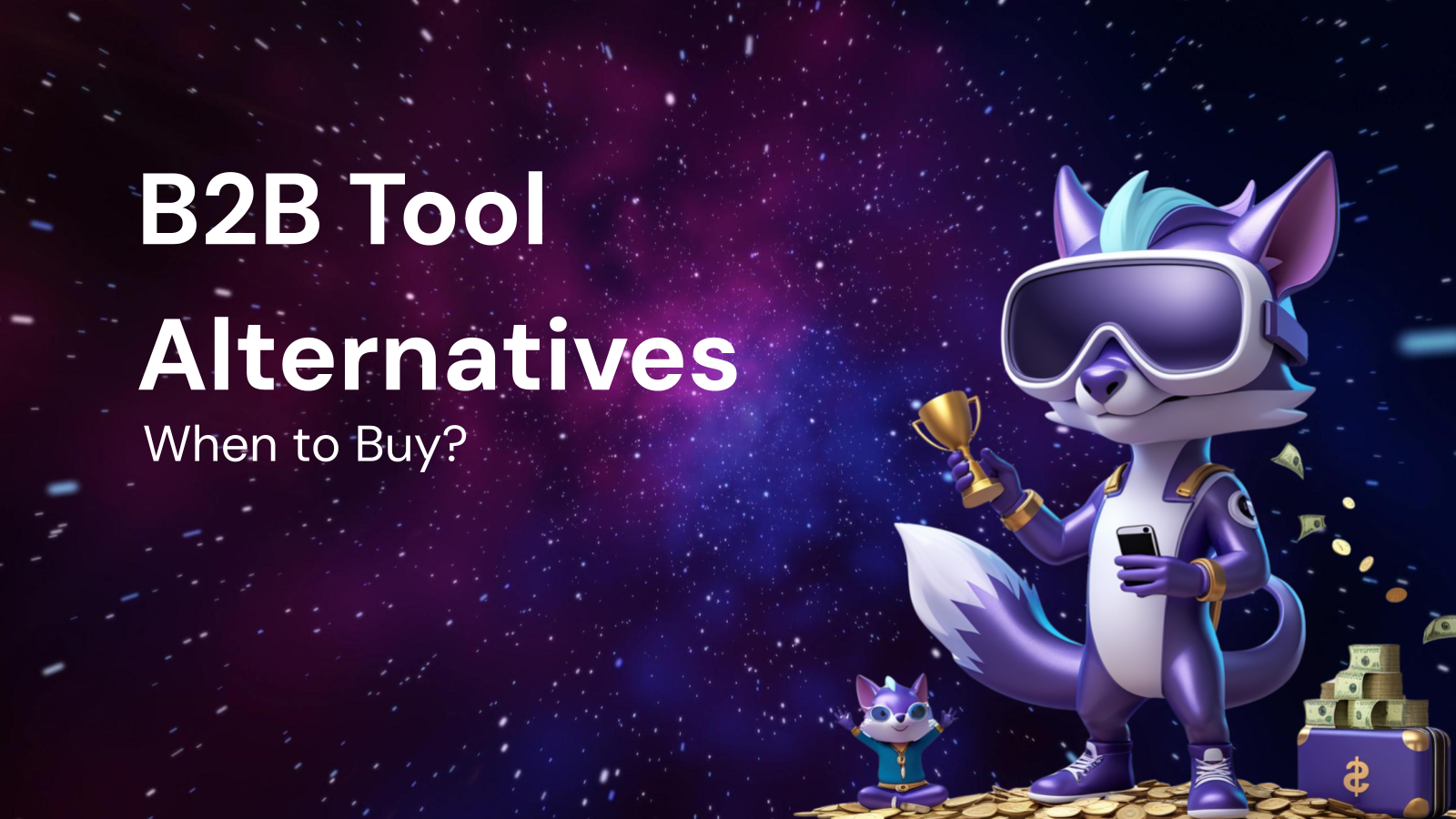Beginner's Guide to the Best B2B Tools

Beginner's Guide to the Best B2B Tools
In the fast-paced world of business-to-business (B2B) interactions, efficiency and effectiveness are paramount. To thrive, companies need to leverage the right tools to streamline operations, enhance communication, and ultimately, drive revenue. This guide is designed for beginners, providing an overview of the best B2B tools available across various crucial business functions. We'll explore different categories, highlighting key tools and their functionalities to help you navigate the landscape and choose the right solutions for your business needs.
I. Understanding the B2B Tool Landscape
Before diving into specific tools, it's crucial to understand the broad categories of B2B tools and how they contribute to overall business success. These categories often overlap, and many tools offer integrated solutions across multiple functions.
- Customer Relationship Management (CRM): The cornerstone of any successful B2B operation. CRMs help you manage interactions with current and potential customers, track sales progress, and improve customer satisfaction.
- Marketing Automation: Automate marketing tasks like email campaigns, social media posting, and lead nurturing, freeing up your marketing team to focus on strategic initiatives.
- Sales Enablement: Equip your sales team with the resources and tools they need to close deals faster and more effectively. This includes content management, sales training, and analytics.
- Communication & Collaboration: Foster seamless communication and collaboration within your team and with external partners. This includes tools for instant messaging, video conferencing, and project management.
- Finance & Accounting: Manage your finances efficiently with tools for accounting, invoicing, expense tracking, and financial reporting.
- Human Resources (HR): Streamline HR processes such as payroll, benefits administration, and talent management.
- Project Management: Organize and manage projects effectively, track progress, and ensure timely completion.
- Analytics & Business Intelligence: Gather and analyze data to gain insights into your business performance and make informed decisions.
- E-commerce Platforms: If you sell products online, an e-commerce platform provides the infrastructure for online sales, order management, and customer service.
- Content Management Systems (CMS): Create, manage, and publish website content effectively to attract and engage potential customers.
II. Essential B2B Tools for Different Business Functions
Let's explore some of the best B2B tools within each category, providing a beginner-friendly overview of their features and benefits:
A. Customer Relationship Management (CRM)
- Salesforce Sales Cloud: The industry leader in CRM. Salesforce offers a comprehensive suite of features for sales automation, lead management, opportunity tracking, and reporting. It's highly customizable and scalable, making it suitable for businesses of all sizes. Beginner-friendly Features: Relatively user-friendly interface, plenty of online tutorials and support, and customizable dashboards for easy tracking of key metrics. Cost: Varies depending on features and number of users; often a significant investment.
- HubSpot CRM: A powerful and free CRM that's perfect for startups and small businesses. It offers essential features like contact management, deal tracking, and email integration. HubSpot CRM integrates seamlessly with HubSpot's marketing and sales tools. Beginner-friendly Features: Free to start, intuitive interface, and a wealth of free marketing and sales resources. Cost: Free version available with paid upgrades for more advanced features.
- Zoho CRM: A more affordable alternative to Salesforce, offering a wide range of features for sales, marketing, and customer support. Zoho CRM is known for its flexibility and integration with other Zoho products. Beginner-friendly Features: User-friendly interface, customizable modules, and a robust mobile app. Cost: More affordable than Salesforce, with tiered pricing plans to suit different needs.
- Pipedrive: A sales-focused CRM designed to help businesses close more deals. Pipedrive is known for its visual pipeline management and ease of use. Beginner-friendly Features: Simple and intuitive interface, drag-and-drop pipeline management, and strong focus on sales activities. Cost: Subscription-based with various plans depending on features and number of users.
Key Considerations when Choosing a CRM:
- Business Size & Complexity: Choose a CRM that scales with your business.
- Industry Specific Needs: Some CRMs cater to specific industries with tailored features.
- Integration Capabilities: Ensure the CRM integrates with your existing tools (e.g., email marketing, accounting).
- Budget: Consider the total cost of ownership, including subscription fees, implementation costs, and training expenses.
- Ease of Use: A user-friendly CRM will encourage adoption among your team.
B. Marketing Automation
- HubSpot Marketing Hub: A comprehensive marketing automation platform that includes features for email marketing, social media marketing, landing pages, and analytics. HubSpot Marketing Hub integrates seamlessly with HubSpot CRM. Beginner-friendly Features: User-friendly interface, drag-and-drop email editor, and a wealth of educational resources. Cost: Tiered pricing plans based on features and number of contacts. Free marketing tools available.
- Marketo Engage (Adobe Marketo Engage): A powerful marketing automation platform for enterprise-level businesses. Marketo Engage offers advanced features for lead nurturing, account-based marketing, and revenue attribution. Beginner-friendly Features: While robust, Marketo can have a steeper learning curve. Adobe offers extensive training and support resources. Cost: Expensive and typically requires a dedicated marketing operations team.
- Mailchimp: Primarily known for email marketing, Mailchimp also offers basic marketing automation features such as triggered emails and segmentation. It's a great option for small businesses and startups. Beginner-friendly Features: Easy-to-use email editor, pre-built templates, and a free plan for basic email marketing. Cost: Free plan available with paid upgrades for more features and contacts.
- ActiveCampaign: A marketing automation platform designed for small to medium-sized businesses. ActiveCampaign offers a balance of features and affordability, including email marketing, automation, CRM, and sales automation. Beginner-friendly Features: Relatively user-friendly interface, visual automation builder, and good customer support. Cost: Subscription-based with various plans depending on features and number of contacts.
Key Considerations when Choosing a Marketing Automation Platform:
- Marketing Goals: Define your marketing goals and choose a platform that supports those goals.
- Complexity: Consider the complexity of your marketing campaigns and choose a platform that matches your technical expertise.
- Integration: Ensure the platform integrates with your CRM and other marketing tools.
- Reporting & Analytics: Choose a platform that provides detailed reporting and analytics to track your marketing performance.
- Scalability: Choose a platform that can scale with your business as your marketing needs grow.
C. Sales Enablement
- Salesforce Sales Cloud (again): Many of the features within Sales Cloud can be considered sales enablement tools, especially the content management, training integration, and reporting capabilities.
- Seismic: A leading sales enablement platform that helps sales teams deliver the right content to the right customer at the right time. Seismic offers features for content management, sales training, and analytics. Beginner-friendly Features: While powerful, Seismic is designed for larger organizations with dedicated sales enablement teams. Cost: Enterprise-level pricing.
- Showpad: A sales enablement platform that focuses on improving the customer experience. Showpad offers features for content management, interactive presentations, and sales training. Beginner-friendly Features: User-friendly interface, focus on visual content, and good support. Cost: Subscription-based with various plans depending on features and number of users.
- Guru: A knowledge management platform that helps sales teams quickly access the information they need to close deals. Guru offers features for knowledge base creation, content verification, and real-time knowledge sharing. Beginner-friendly Features: Easy to create and manage knowledge base articles, integrates with popular communication tools like Slack. Cost: Subscription-based with various plans.
Key Considerations when Choosing a Sales Enablement Tool:
- Content Management: How easily can you create, organize, and distribute sales content?
- Training & Onboarding: Does the tool offer features for sales training and onboarding?
- Analytics: Can you track the performance of your sales content and identify areas for improvement?
- Integration: Does the tool integrate with your CRM and other sales tools?
- Mobile Access: Can your sales team access the tool on their mobile devices?
D. Communication & Collaboration
- Slack: A popular messaging platform for team communication. Slack offers features for real-time messaging, file sharing, and integrations with other tools. Beginner-friendly Features: Intuitive interface, easy to create channels for different topics, and integrates with a wide range of apps. Cost: Free plan available with paid upgrades for more features and storage.
- Microsoft Teams: A collaboration platform that combines chat, video conferencing, and file sharing. Microsoft Teams integrates seamlessly with other Microsoft Office applications. Beginner-friendly Features: Integrated with Microsoft Office suite, offers robust video conferencing capabilities, and good file sharing features. Cost: Included with Microsoft 365 subscriptions.
- Zoom: A leading video conferencing platform that offers high-quality video and audio. Zoom is ideal for meetings, webinars, and online training. Beginner-friendly Features: Easy to use, reliable video and audio quality, and offers features like screen sharing and recording. Cost: Free plan available with paid upgrades for longer meetings and more participants.
- Asana/Trello: Project management tools which also facilitate team communication by allowing task assignment, updates, and discussion within the tool. Beginner-friendly Features (Trello): Drag-and-drop interface, visually appealing card system, easy to learn. Beginner-friendly Features (Asana): More structured approach, suitable for complex projects, customizable workflows. Cost: Both offer free plans with paid upgrades for more advanced features.
Key Considerations when Choosing a Communication & Collaboration Tool:
- Team Size: Consider the size of your team and the number of users the tool supports.
- Communication Needs: Do you need real-time messaging, video conferencing, or both?
- Integration: Does the tool integrate with your other business tools?
- Security: Ensure the tool offers robust security features to protect your data.
- Ease of Use: Choose a tool that is easy to use and adopt by your team.
E. Finance & Accounting
- QuickBooks Online: A popular accounting software for small businesses. QuickBooks Online offers features for invoicing, expense tracking, payroll, and financial reporting. Beginner-friendly Features: Easy-to-use interface, comprehensive features for small business accounting, and good customer support. Cost: Subscription-based with various plans depending on features and number of users.
- Xero: Another popular accounting software for small businesses. Xero offers similar features to QuickBooks Online, including invoicing, expense tracking, and financial reporting. Beginner-friendly Features: Clean interface, focuses on cloud-based accessibility, and offers good integrations with other business tools. Cost: Subscription-based with various plans.
- Bill.com: A platform for automating accounts payable and accounts receivable. Bill.com helps businesses streamline their payment processes and improve cash flow. Beginner-friendly Features: Simplifies bill payments, integrates with accounting software, and offers good fraud prevention measures. Cost: Subscription-based.
Key Considerations when Choosing Finance & Accounting Software:
- Business Size: Choose software that is appropriate for the size of your business.
- Accounting Needs: What specific accounting tasks do you need to perform?
- Integration: Does the software integrate with your other business tools?
- Security: Ensure the software offers robust security features to protect your financial data.
- Reporting: Choose software that provides the reports you need to track your financial performance.
III. Implementing and Managing B2B Tools Effectively
Choosing the right B2B tools is only half the battle. To maximize their value, you need to implement and manage them effectively:
- Define Clear Goals: Before implementing any tool, define clear goals and objectives. What problems are you trying to solve? What outcomes do you expect to achieve?
- Plan for Implementation: Develop a detailed implementation plan, including timelines, responsibilities, and training requirements.
- Train Your Team: Provide adequate training to your team on how to use the tools effectively.
- Monitor Usage and Performance: Track the usage and performance of your tools to identify areas for improvement.
- Integrate Tools: Integrate your tools to create a seamless workflow and avoid data silos.
- Regularly Review and Evaluate: Periodically review your B2B tool stack and evaluate whether it's still meeting your needs. Technology evolves quickly, and you may need to replace or upgrade tools over time.
IV. Conclusion
Choosing the right B2B tools is a crucial investment for any business seeking to optimize its operations, enhance customer relationships, and drive growth. This guide provides a starting point for understanding the B2B tool landscape and identifying tools that can help you achieve your business goals. Remember to carefully evaluate your needs, consider your budget, and prioritize ease of use and integration when making your decisions. By implementing and managing these tools effectively, you can unlock significant value and gain a competitive edge in the B2B marketplace.




Comments ()